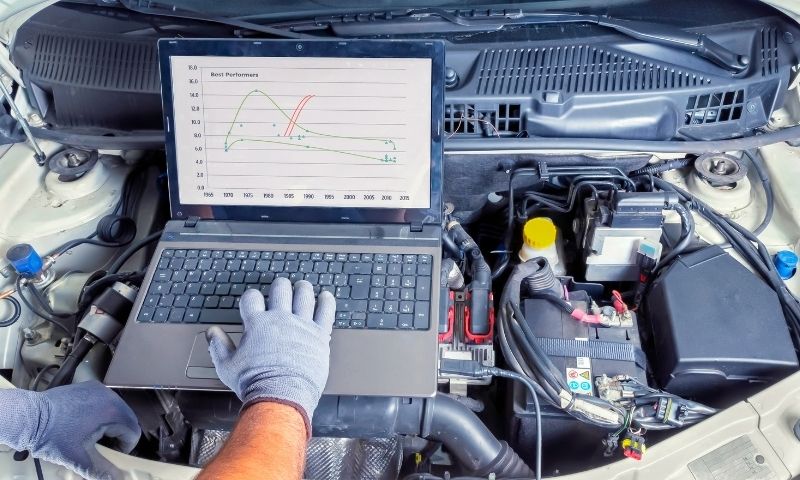A Leading Resource Built By Automotive Lovers, For Automotive Lovers.
We’ve helped consumers around the world make their purchasing decisions.
Latest Articles
To recharge an old deep cycle battery, begin with a low charge current of 5 amps or less. Check each cell’s water level and add distilled water if necessary. Monitor… To recharge an Audi car key battery, note that Audi key fobs use a non-rechargeable CR2032 battery. To replace it, use the key release button to open the fob. Remove… To recharge an old car battery, first remove the cell caps. Connect the battery to a charger set to 12V and 2 amps. Charge it slowly for 24 to 36… To recharge an Arlo Pro 2 battery, first, remove the battery from the camera. If it is connected, unplug the AC power adapter. Then, plug the camera back into the… To recharge a sealed lead acid battery, set a DC voltage between 2.30 volts (float) and 2.45 volts (fast) per cell. Connect the negative terminal of the charger to the… To recharge a mower battery, follow these steps. First, wear safety precautions, like gloves and goggles. Disconnect the battery. For lithium-ion batteries, use a compatible charger and charge before it… To recharge a motorcycle battery, use a smart charger. Connect the positive clamp to the positive terminal and the negative clamp to the negative terminal. Select a charging method, like… To recharge a lithium-ion battery, use the manufacturer’s charger or a compatible one. Charge partially instead of fully to maintain battery health. Avoid complete discharges for long-term reliability and to… To recharge a hybrid battery, use a portable charger or a home charger connected to your electrical system. The battery also charges through regenerative braking, which captures energy when the… To recharge a golf cart battery, first identify the battery type. Gather the charging equipment. Park the golf cart in a ventilated area and switch it off. Connect the charger… To recharge a gel battery, use a temperature-sensing, voltage-regulated charger. Set the voltage between 12V and 14.4V. Charge at 20% of the 20-hour rate. Avoid constant current chargers. Monitor the… To recharge a fully flat LiPo battery, connect it to a compatible LiPo charger. Set the charging current to the lowest level, typically 0.1A. Match the voltage with the battery’s… To recharge a fully discharged car battery, follow these steps: 1. Prioritize safety. 2. Identify the battery. 3. Connect the positive charger to the positive terminal. 4. Attach the negative… To recharge a Duracell rechargeable battery, use a compatible charger made for rechargeable battery types. Do not attempt to recharge regular alkaline Duracell batteries, as this can cause overheating and… To recharge a flat car battery, first find the positive and negative terminals. Attach the red jumper cable to the positive terminal of the dead battery. Connect the other end… Dry cell batteries are usually not rechargeable. They use a chemical reaction that cannot be reversed. Consider using rechargeable batteries like AGM batteries or alkaline batteries. Always use the correct… To recharge a drill battery, connect it to a compatible charger. Plug the charger into an outlet. Charge the battery for 2-6 hours, depending on the model. If you don’t… To recharge a disposable alkaline battery, use a compatible charger. Charge for 30 minutes, then turn it off for a cooling period. Repeat this safe charging cycle. Keep in mind… To recharge a dead OPTIMA battery, use a good battery charger. You can: 1. Connect a working automotive battery in parallel for a quick boost. 2. Use an AGM-specific charger…. To recharge a dead motorcycle battery, use a battery charger. Connect the positive clamp to the positive terminal and the negative clamp to the negative terminal. Choose a trickle charger… To recharge a dead lithium battery, use a lithium-ion charger with the correct voltage output. You can connect six 9V batteries in series for a quick boost. Clean the battery… To recharge a dead li-ion battery, use a compatible charger that supports low current (200-300 mA). Charge it until it’s fully charged. Conduct discharge cycles with a resistor to manage… A dry cell battery is usually not rechargeable. If it’s dead, recycling is best. Consider using rechargeable options like NiCad or lithium batteries instead. If you create a DIY charger,… To recharge a dead cordless drill battery, use the included charger. Place the battery in the charger and watch for a blinking red light, which shows it’s charging. Charge for… To recharge a dead 12-volt battery, follow these steps. First, take safety precautions. Connect the red jumper cable to the positive terminal of the battery. Attach the black cable to… To recharge a DC 12V lead-acid battery with a 7Ah capacity, use a charger that provides about 14V. Charge the battery at a rate between 0.5 and 1A. If fully… CR2032 batteries are not rechargeable. They are lithium primary batteries. If you need a rechargeable option, choose LR2032 or LIR2032 batteries. Always check the battery labels to confirm. When charging… To recharge a completely dead lithium-ion battery, first clean the battery terminals. Use a charger with a 0V function and connect it using alligator clips. Charge at a low current,… To recharge a completely flat car battery, first gather a battery charger and find an outlet. Locate your battery terminals. Make sure the charger is off, then attach it to… To recharge a completely dead battery, follow these steps. Ensure safety first. Connect red jumper cables to the positive terminals and black cables to the negative terminals of both batteries….Revive an Old Deep Cycle Battery: Proven Methods to Recharge and Fix It
Recharge an Audi Key Fob Battery: Easy DIY Instructions and Troubleshooting Tips
How to Recharge an Old Car Battery: Tips for Reconditioning and Saving Money
Recharge Arlo Pro 2 Battery: Troubleshooting Charging Issues and Tips
How to Recharge a Sealed Rechargeable Battery: Effective Methods and Practical Tips
Recharge Your Lawn Mower Battery: Effective Tips for Dead Battery Charging
How to Recharge a Dead Motorcycle Battery: Tips and Techniques for Success
How to Recharge a Li-Ion Battery: Methods for Reviving Completely Dead Cells
Recharge a Hybrid Battery: Effective Methods and Tips for Your Hybrid Car
How to Recharge a Golf Cart Battery: Easy Steps and Tips for Maximum Life
How to Recharge a Gel Battery Safely: Tips, Methods, and Compatibility Insights
How to Safely Recharge a Fully Flat LiPo Battery: Tips to Revive Your Dead Battery
How to Recharge a Fully Discharged Car Battery: Easy Methods to Revive It Fast
How to Recharge a Duracell Battery: Tips to Revive Alkaline and Rechargeable Types
How to Recharge a Flat Car Battery: Easy Step-by-Step Guide to Restore Power Yourself
How to Recharge a Dry Cell Battery: Essential Steps and Expert Tips for Activation
How to Recharge a Drill Battery: Tips to Fix a Dead Cordless Drill Without a Charger
How to Recharge a Disposable Battery: Methods, Tips, and Risks Explained
How to Recharge a Dead OPTIMA Battery: Tips for Restoring Your AGM Battery
How to Recharge a Dead Motorcycle Battery: Step-by-Step Tips to Revive It
Revive a Dead Lithium Battery: How to Recharge, Reactivate, and Boost Charge!
How to Recharge a Dead Li-Ion Battery: Step-by-Step Guide to Revive It!
Revive a Dead Dry Cell Battery: Effective Tips on How to Recharge It Back to Life
Revive a Dead Cordless Drill Battery: Easy Hacks to Recharge It Now!
Reviving a Completely Dead 12 Volt Battery: Tips and Tricks to Recharge Successfully
How to Recharge a DC 12V 7Ah Battery: Essential Charging Methods and Safety Tips
How to Recharge a CR2032 Battery: DIY Home Charging Solutions and Tips
Revive a Completely Dead Lithium-Ion Battery: Effective Ways to Recharge It
Revive a Completely Dead Car Battery: Easy Ways to Recharge It Yourself
How to Recharge a Completely Dead Battery: Easy Step-by-Step Methods to Restore It



